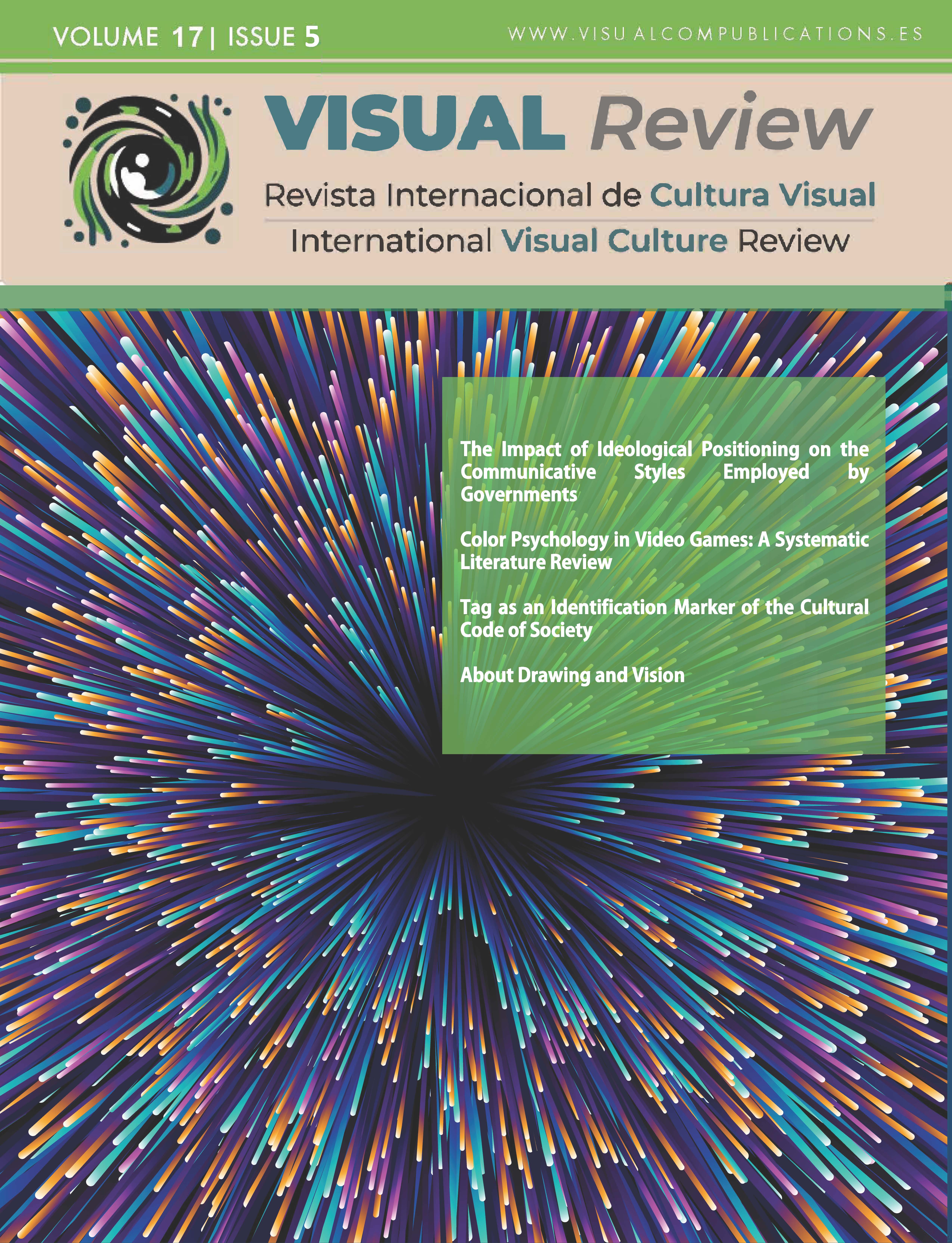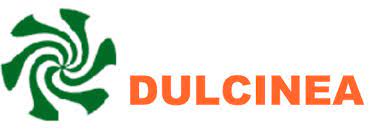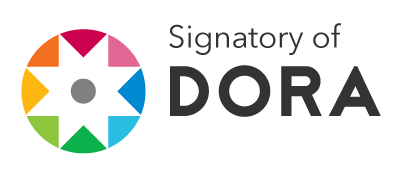Optimization of Social Media Campaigns
Applying CRO in Digital Advertising
DOI:
https://doi.org/10.62161/revvisual.v17.5855Keywords:
Conversion optimization, Digital advertising, Social media, Competitive analysis, Visual strategy, User behavior, Fashion communicationAbstract
This study analyzes the application of conversion rate optimization (CRO) techniques in social media advertising campaigns, exploring how visual alignment with competitor brands influences user interaction. Through a case study in the footwear sector, Meta Ads were evaluated, and predominant visual patterns were identified. Findings suggest that consistency with industry trends can reduce conversion friction, optimizing advertising effectiveness. This approach reinforces the need to integrate CRO strategies from the user acquisition stage, improving user experience and increasing commercial performance.
Downloads
Global Statistics ℹ️
|
287
Views
|
210
Downloads
|
|
497
Total
|
|
References
Bargh, J. A., Chen, M., & Burrows, L. (1996). Automaticity of social behavior: Direct effects of trait construct and stereotype activation on action. Journal of personality and social psychology, 71(2), 230. https://doi.org/10.1037/0022-3514.71.2.230 DOI: https://doi.org/10.1037//0022-3514.71.2.230
Belanche, D., Cenjor, I., & Pérez-Rueda, A. (2019). Instagram Stories versus Facebook Wall: an advertising effectiveness analysis. Spanish Journal of Marketing-ESIC, 23(1), 69-94. https://doi.org/10.1108/SJME-09-2018-0042 DOI: https://doi.org/10.1108/SJME-09-2018-0042
Brinck, T., Gergle, D., y Wood, S. D. (2001). Usability for the web: Designing web sites that work. Elsevier. DOI: https://doi.org/10.1016/B978-155860658-6/50010-9
Chaffey, D., y Smith, P. R. (2013). eMarketing eXcellence: Planning and optimizing your digital marketing. Routledge. DOI: https://doi.org/10.4324/9780203082812
Clifton, B. (2012). Advanced web metrics with Google Analytics. John Wiley & Sons.
Dean, B. (2023, 1 febrero). Conversion Rate Optimization: The Definitive Guide. Backlinko. https://backlinko.com/conversion-rate-optimization
Eckles, D., Gordon, B. R., & Johnson, G. A. (2018). Field studies of psychologically targeted ads face threats to internal validity. Proceedings of the National Academy of Sciences, 115(23), E5254-E5255. https://doi.org/10.1073/pnas.1805363115 DOI: https://doi.org/10.1073/pnas.1805363115
Eroglu, S. A., Machleit, K. A., y Davis, L. M. (2001). Atmospheric qualities of online retailing: A conceptual model and implications. Journal of Business research, 54(2), 177-184. https://doi.org/10.1016/S0148-2963(99)00087-9 DOI: https://doi.org/10.1016/S0148-2963(99)00087-9
Escalas, J. E., y Bettman, J. R. (2005). Self-construal, reference groups, and brand meaning. Journal of consumer research, 32(3), 378-389. https://doi.org/10.1086/497549 DOI: https://doi.org/10.1086/497549
Essig, C. (2022, 20 diciembre). Brand Strategy vs. Marketing Strategy (And How they Work Together). CXL. https://cxl.com/blog/brand-strategy-vs-marketing-strategy/
Faisal, M., Naseer, M., & Akram, G. (2023). Social Media Optimization through A/B Testing for Brand Awareness: A Reach Analysis of A/B Creatives. Online Media and Society, 4(2), 89-100. DOI: 10.71016/oms/j0ercq24 DOI: https://doi.org/10.71016/oms/j0ercq24
Gómez-Zorrilla, J., y De La Espada, J. (2020). CRO. Convierte las visitas web en ingresos. Editorial Almuzara.
Gordon, B. R., Zettelmeyer, F., Bhargava, N., & Chapsky, D. (2019). A comparison of approaches to advertising measurement: Evidence from big field experiments at Facebook. Marketing Science, 38(2), 193-225. https://doi.org/10.1287/mksc.2018.1135 DOI: https://doi.org/10.1287/mksc.2018.1135
Gudigantala, N., Bicen, P., & Eom, M. (2016). An examination of antecedents of conversion rates of e-commerce retailers. Management Research Review, 39(1), 82-114. https://doi.org/10.1108/MRR-05-2014-0112 DOI: https://doi.org/10.1108/MRR-05-2014-0112
Hancock, G. (2023, 5 julio). The definitive guide to Google Analytics 4: What you should know. CXL. https://cxl.com/blog/google-analytics-4/
Hancock, G. (2023, junio 20). Brand awareness: How to claim that top-of-mind position. CXL. https://cxl.com/blog/brand-awareness-marketing/
Hardwick, J. (2019, 18 junio). Cómo hacer un análisis SEO de tu competencia [incluye plantilla]. Blog de SEO de Ahrefs. https://ahrefs.com/blog/es/analisis-competencia/
Harris, J. (1998). Virtual architecture: Designing and directing curriculum-based telecomputing.
Hay, L. (2017). Researching UX: Analytics: Understanding Is the Heart of Great UX. SitePoint Pty Ltd.
Hermayanto, R. (2023). Effective marketing strategies in business: trends and best practices in the digital age. Jurnal Administrare: Jurnal Pemikiran Ilmiah Dan Pendidikan Administrasi Perkantoran, 10(1), 61-72. DOI: 10.26858/ja.v10i1.45101 DOI: https://doi.org/10.26858/ja.v10i1.45101
Kaushik, A. (2009). Web analytics 2.0: The art of online accountability and science of customer centricity. John Wiley & Sons.
Kim, M., y Lennon, S. J. (2000). Television shopping for apparel in the United States: Effects of perceived amount of information on perceived risks and purchase intentions. Family and Consumer Sciences Research Journal, 28(3), 301-331. https://doi.org/10.1177/1077727X00283002 DOI: https://doi.org/10.1177/1077727X00283002
Kohavi, R., y Longbotham, R. (2015). Online controlled experiments and A/B tests. Encyclopedia of machine learning and data mining, 1-11. https://doi.org/10.1007/978-1-4899-7502-7_891-2 DOI: https://doi.org/10.1007/978-1-4899-7502-7_891-1
Lachman, S. J., y Bass, A. R. (1985). A direct study of halo effect. The journal of psychology, 119(6), 535-540. https://doi.org/10.1080/00223980.1985.9915460 DOI: https://doi.org/10.1080/00223980.1985.10542924
Laja, P. (2022, diciembre 16). First impressions matter: Why great visual design is essential. CXL. https://cxl.com/blog/first-impressions-matter-the-importance-of-great-visual-design/
Lindgaard, G., Dudek, C., Sen, D., Sumegi, L., y Noonan, P. (2011). An exploration of relations between visual appeal, trustworthiness and perceived usability of homepages. ACM Transactions on Computer-Human Interaction (TOCHI), 18(1), 1-30. https://doi.org/10.1145/1959022.1959023 DOI: https://doi.org/10.1145/1959022.1959023
Nakatani, K., & Chuang, T. T. (2011). A web analytics tool selection method: an analytical hierarchy process approach. Internet Research, 21(2), 171-186. https://doi.org/10.1108/10662241111123757 DOI: https://doi.org/10.1108/10662241111123757
Nordhoff, S., de Winter, J., Madigan, R., Merat, N., van Arem, B., y Happee, R. (2018). User acceptance of automated shuttles in Berlin-Schöneberg: A questionnaire study. Transportation Research Part F: Traffic Psychology and Behaviour, 58, 843-854. https://doi.org/10.1016/j.trf.2018.06.024 DOI: https://doi.org/10.1016/j.trf.2018.06.024
Orazi, D. C., & Johnston, A. C. (2020). Running field experiments using Facebook split test. Journal of Business Research, 118, 189-198. https://doi.org/10.1016/j.jbusres.2020.06.053 DOI: https://doi.org/10.1016/j.jbusres.2020.06.053
Osterwalder, A., y Pigneur, Y. (2010). Business model generation: a handbook for visionaries, game changers, and challengers (Vol. 1). John Wiley & Sons.
Pakkala, H., Presser, K., & Christensen, T. (2012). Using Google Analytics to measure visitor statistics: The case of food composition websites. International Journal of Information Management, 32(6), 504-512. https://doi.org/10.1016/j.ijinfomgt.2012.04.008 DOI: https://doi.org/10.1016/j.ijinfomgt.2012.04.008
Rennie, S., Buchbinder, M., Juengst, E., Brinkley-Rubinstein, L., Blue, C., y Rosen, D. L. (2020). Scraping the web for public health gains: Ethical considerations from a ‘big data’research project on HIV and incarceration. Public Health Ethics, 13(1), 111-121. https://doi.org/10.1093/phe/phaa006 DOI: https://doi.org/10.1093/phe/phaa006
Shneiderman, B., Byrd, D., y Croft, W. B. (1998). Sorting out searching: A user-interface framework for text searches. Communications of the ACM, 41(4), 95-98. DOI: https://doi.org/10.1145/273035.273069
Simioni, A. (2019). Testing clarity and performance of two landing pages: the impact of people's emotions and perceptions on conversions and pages' performance.
Singh, V., Nanavati, B., Kar, A. K., & Gupta, A. (2023). How to maximize clicks for display advertisement in digital marketing? A reinforcement learning approach. Information Systems Frontiers, 25(4), 1621-1638. https://doi.org/10.1007/s10796-022-10314-0 DOI: https://doi.org/10.1007/s10796-022-10314-0
Siqueira, J. G., y de Paula, M. M. (2018, June). IPead A/B test execution framework. In Proceedings of the XIV Brazilian Symposium on Information Systems (pp. 1-8). https://doi.org/10.1145/3229345.3229360 DOI: https://doi.org/10.1145/3229345.3229360
Siroker, D., & Koomen, P. (2015). A/B testing: The most powerful way to turn clicks into customers. John Wiley & Sons.
Soloaga, P. (2002). Construcción de imagen de marca en Internet. Aplicación de un modelo interactivo. Área abierta, (4).
Song, L., Mo, Z., Liu, J., y Fu, H. (2023). The effect of online shopping channel on consumers’ responses and the moderating role of website familiarity. Electronic Commerce Research, 1-21. https://doi.org/10.1007/s10660-023-09781-7 DOI: https://doi.org/10.1007/s10660-023-09781-7
Srivastava, R. S., y Manohar, A. (2020). Redefining Mobile Marketing through Conversion Rate Optimisation. IBA JoUrNAl of MANAgEMENt & lEADErShIp, 12(1), 19.
Tayar, R. (2018). CRO. Diseño y desarrollo de negocios digitales. Comercial Grupo ANAYA, SA.
Tayar, R. (2019). CRO Profesional. Estrategia y Práctica. Comercial Grupo ANAYA, SA.
Then, N. K., y DeLong, M. R. (1999). Apparel shopping on the web. Journal of Family and Consumer Sciences, 91(3), 65.
Thorndike, E. L. (1920). Intelligence examinations for college entrance. The Journal of Educational Research, 1(5), 329-337. DOI: https://doi.org/10.1080/00220671.1920.10879060
Welling, R., & White, L. (2006). Web site performance measurement: promise and reality. Managing Service Quality: An International Journal, 16(6), 654-670. https://doi.org/10.1108/09604520610711954 DOI: https://doi.org/10.1108/09604520610711954
Yang, S., Lin, S., Carlson, J. R., & Ross Jr, W. T. (2016). Brand engagement on social media: will firms’ social media efforts influence search engine advertising effectiveness?. Journal of Marketing Management, 32(5-6), 526-557. https://doi.org/10.1080/0267257X.2016.1143863 DOI: https://doi.org/10.1080/0267257X.2016.1143863
Zhang, J., Farris, P. W., Irvin, J. W., Kushwaha, T., Steenburgh, T. J., y Weitz, B. A. (2010). Crafting integrated multichannel retailing strategies. Journal of interactive marketing, 24(2), 168-180. https://doi.org/10.1016/j.intmar.2010.02.002 DOI: https://doi.org/10.1016/j.intmar.2010.02.002
Downloads
Published
How to Cite
Issue
Section
License
Copyright (c) 2025 Authors retain copyright and transfer to the journal the right of first publication and publishing rights

This work is licensed under a Creative Commons Attribution-NoDerivatives 4.0 International License.
Those authors who publish in this journal accept the following terms:
-
Authors retain copyright.
-
Authors transfer to the journal the right of first publication. The journal also owns the publishing rights.
-
All published contents are governed by an Attribution-NoDerivatives 4.0 International License.
Access the informative version and legal text of the license. By virtue of this, third parties are allowed to use what is published as long as they mention the authorship of the work and the first publication in this journal. If you transform the material, you may not distribute the modified work. -
Authors may make other independent and additional contractual arrangements for non-exclusive distribution of the version of the article published in this journal (e.g., inclusion in an institutional repository or publication in a book) as long as they clearly indicate that the work was first published in this journal.
- Authors are allowed and recommended to publish their work on the Internet (for example on institutional and personal websites), following the publication of, and referencing the journal, as this could lead to constructive exchanges and a more extensive and quick circulation of published works (see The Effect of Open Access).













